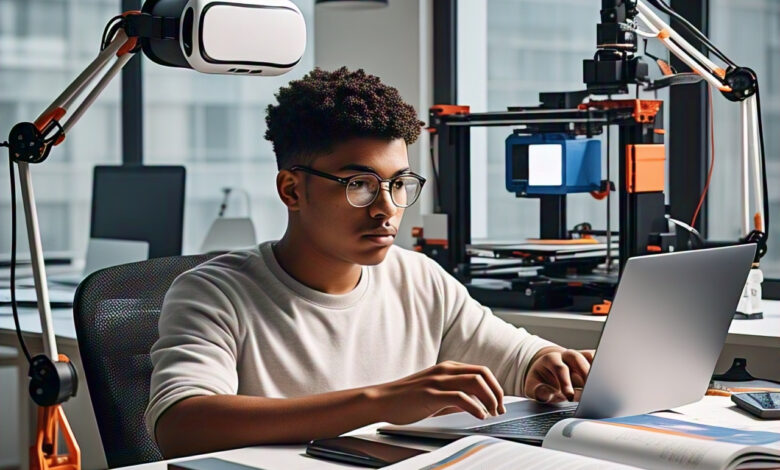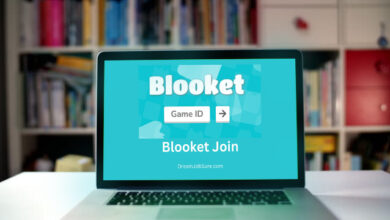Overcoming Educational Challenges with Modern Tech Breakthroughs

Though technology has always changed education, in 2024 the rate of change will be absolutely revolutionary. From augmented reality (AR) to artificial intelligence (AI), significant developments are redefining our instruction, learning, and connection. These developments do, however, have complications that leave teachers, students, and tech aficionados wondering how best to use these tools for significant change.
Consider Renweb, a cloud-based K–12 school management tool relied upon by many organizations, now FACTS SIS. It shows how contemporary technologies can simplify processes so freeing more time for attention to kids and their requirements.
Five important innovations influencing the direction of education are investigated in this blog. Whether you’re a tech enthusiast identifying the next great trend in EdTech, a teacher looking for fresh ideas, or a student battling antiquated approaches, current technology is conquering challenges in education.
Personalized Learning Experiences
Redefining the Classroom
Standard classrooms have sometimes depended on one-size-fits-all strategies. By customizing instructional experiences to fit every student’s particular requirements, interests, and speed, personalized learning flips this model. And technology enables this as well.
DreamBox and Coursera, two AI-powered platforms, examine personal performance data to provide courses that change instantly. AI creates a learning environment that balances difficulties and strengths, whether a student excels in geometry but suffers with algebra.
How It Benefits Students and Educators
- Custom Feedback: AI tools provide instant, data-driven performance insights that guide students and instructors.
- Self-Paced Learning: Digital platforms enable students to learn at a comfortable speed without pressure from classmates.
- Equal Access: Tools like Khan Academy bring premium learning experiences to students worldwide, bridging educational gaps.
By investing in personalized learning, educators are proving that students don’t have to conform to a rigid curriculum; they can thrive in one designed for them.
Gamification in Education
Learning starts with engagement, but it’s also quite challenging to keep pupils inspired. Now enter gamification, a technique that introduces into lessons game design components including incentives, challenges, and leaderboards.
Why Gamification Works
Games by nature honor hard work. A win, even a minor one, raises dopamine levels and inspires ongoing work. Using streaks and badges to keep users returning to language sessions, educational sites like Duolingo masterfully apply this idea.
Real-World Applications of Gamification
- Kahoot! energizes classrooms through quiz-based games.
- Quizizz allows teachers to customize interactive trivia for any subject.
- Minecraft Education Edition engages students with digital problem-solving games, even teaching coding.
Gamification addresses one of education’s biggest challenges, keeping students invested by turning learning into fun.
AI-Driven Tutoring Systems
Most likely, the most revolutionary instrument available in modern teaching is artificial intelligence. However, tutoring has always been successful; until recently it has been difficult to scale it to fit every student’s requirements.
By customizing their response to particular learning difficulties, AI tutoring systems such as Squirrel AI and Carnegie Learning replicate human tutors at scale.
Key Features of AI-Driven Tutoring
- Adaptive Questioning: Learn what students know and actively adjust content to what they don’t know.
- 24/7 Availability: AI isn’t limited by working hours, making it accessible whenever students need help.
- Reduced Teacher Workload: Teachers can focus on building classroom relationships while AI tackles test prep or repetitive tasks like grading.
AI in education isn’t just a supporting role; it’s becoming central to innovative learning models.
Virtual and Augmented Reality
Imagine visiting Jupiter’s atmosphere from your school chair or entering a historical combat during World War II. Virtual reality (VR) and augmented reality (AR) are bringing formerly unthinkable educational opportunities to life, with platforms powered by technologies including the IP2 network enabling real-time, immersive experiences across the globe.
Significant Benefits of VR/AR in Education
- Immersive Learning: A virtual chemistry lab allows students to conduct experiments safely without physical resources.
- Accessibility Beyond Geography: Students in rural areas can “tour” the Louvre or attend a live VR seminar at MIT.
- Empathy Building: AR simulations can put students in someone else’s shoes, enhancing social-emotional learning.
Platforms like zSpace and Google Expeditions are already proving how transformational AR can be, helping students engage with abstract concepts in kinesthetic ways.
Addressing Challenges and Concerns
With so much optimism surrounding tech breakthroughs, the challenges demand equal attention.
Financial Accessibility
Although modern tools like Renweb and AI tutors help educational institutions, their initial outlay is expensive. Underfunded organizations struggle to make hardware, software, and IT support investments without subsidies.
Bridging the Digital Divide
Rural communities often struggle with poor internet infrastructure. For EdTech to be truly equitable, nationwide broadband initiatives must remain a priority.
The Ethics of AI
A growing list of concerns accompanies AI’s rise in classrooms, from algorithmic bias to data privacy. Clear policy guidelines are essential to ensure that EdTech innovations do not harm.
Teacher Training
New technologies demand a level of expertise many educators lack. Institutions that commit to ongoing training programs ensure their staff can unlock the full potential of these tools.
How Technology Builds a Brighter Future
The future of education is about empowering everyone, students, instructors, and administrators both not only about technologies. Knowing EdTech’s capabilities can help you to help to transform education.
From administration to curriculum, systems like Renweb show how effortlessly innovations now fit into school operations, if you’re still wondering which direction technology is headed.
The opportunities are unbounded. Education will keep changing in ways that combine modern technologies, accessibility, and creativity. Examine our suggestions or get in touch with IT professionals right now to find out how your institution can remain competitive.




